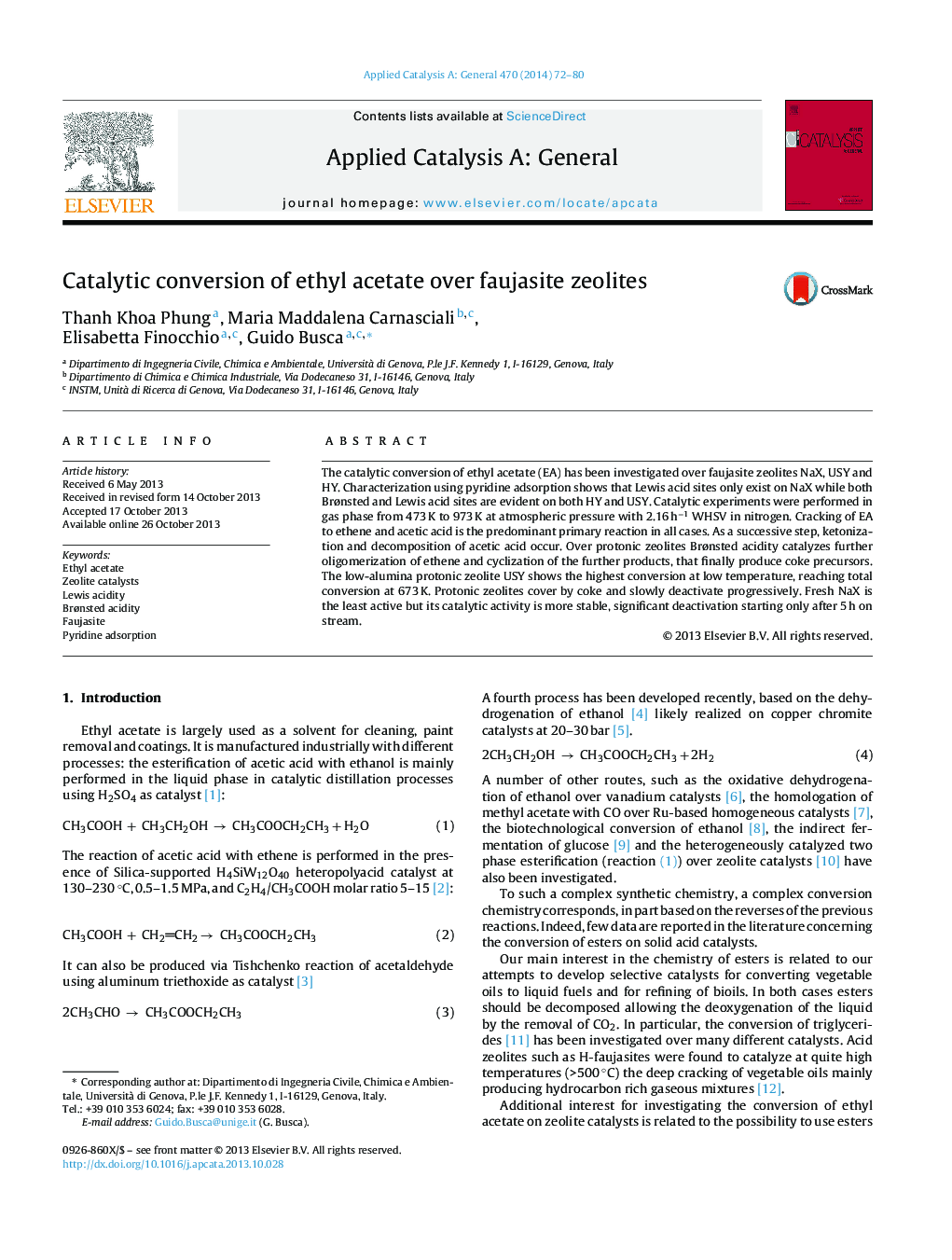| Article ID | Journal | Published Year | Pages | File Type |
|---|---|---|---|---|
| 39981 | Applied Catalysis A: General | 2014 | 9 Pages |
•Ethyl acetate primarily cracks over faujasite zeolite to acetic acid and ethylene.•Ketonization of acetic acid also occurs.•Lewis and Brønsted acid sites behave in a similar way.•Graphite-like coke is formed at the catalyst surface.•Surface acetate species act as spectators.
The catalytic conversion of ethyl acetate (EA) has been investigated over faujasite zeolites NaX, USY and HY. Characterization using pyridine adsorption shows that Lewis acid sites only exist on NaX while both Brønsted and Lewis acid sites are evident on both HY and USY. Catalytic experiments were performed in gas phase from 473 K to 973 K at atmospheric pressure with 2.16 h−1 WHSV in nitrogen. Cracking of EA to ethene and acetic acid is the predominant primary reaction in all cases. As a successive step, ketonization and decomposition of acetic acid occur. Over protonic zeolites Brønsted acidity catalyzes further oligomerization of ethene and cyclization of the further products, that finally produce coke precursors. The low-alumina protonic zeolite USY shows the highest conversion at low temperature, reaching total conversion at 673 K. Protonic zeolites cover by coke and slowly deactivate progressively. Fresh NaX is the least active but its catalytic activity is more stable, significant deactivation starting only after 5 h on stream.
Graphical abstractFigure optionsDownload full-size imageDownload high-quality image (114 K)Download as PowerPoint slide
